Black Friday & Cyber Monday are the most exciting days for your Shopify store. You get a bunch of orders, mostly from first-time buyers. You close the most deals, and the prospect of selling a lot is exhilarating.
The sad thing is, this doesn’t last forever. When the sale season ends, merchants are left trying to figure out how to retain their business. How can they make sales, without storewide discounts? How can they incentivize purchases all-year round?
In this article, we’ll introduce the different ways you can maximize customer lifetime value:
Tip #1: Leverage the power of product recommendations
Just how important are product recommendations in maximizing customer lifetime value? A study found that that 56% of online consumers are more likely to return to a site that offers product recommendations and 45% of consumers are more likely to shop on a site that offers personalized recommendations.
One way you can leverage the power of recommendations is to place them in your transactional emails, such as your shipping confirmation emails and order confirmation emails. In fact, Smartmail reports that product suggestions sent via email can increase CTR by an astounding 300%! A good tip is to send recommendations based on a customer's past purchase and behavior.
This way, you can upsell products that customers will likely buy. For example, Udemy’s order confirmation email contains product recommendations, which are based on the item that the customer bought. They find out the products that customers will likely buy based on their current purchase and upsell related products.
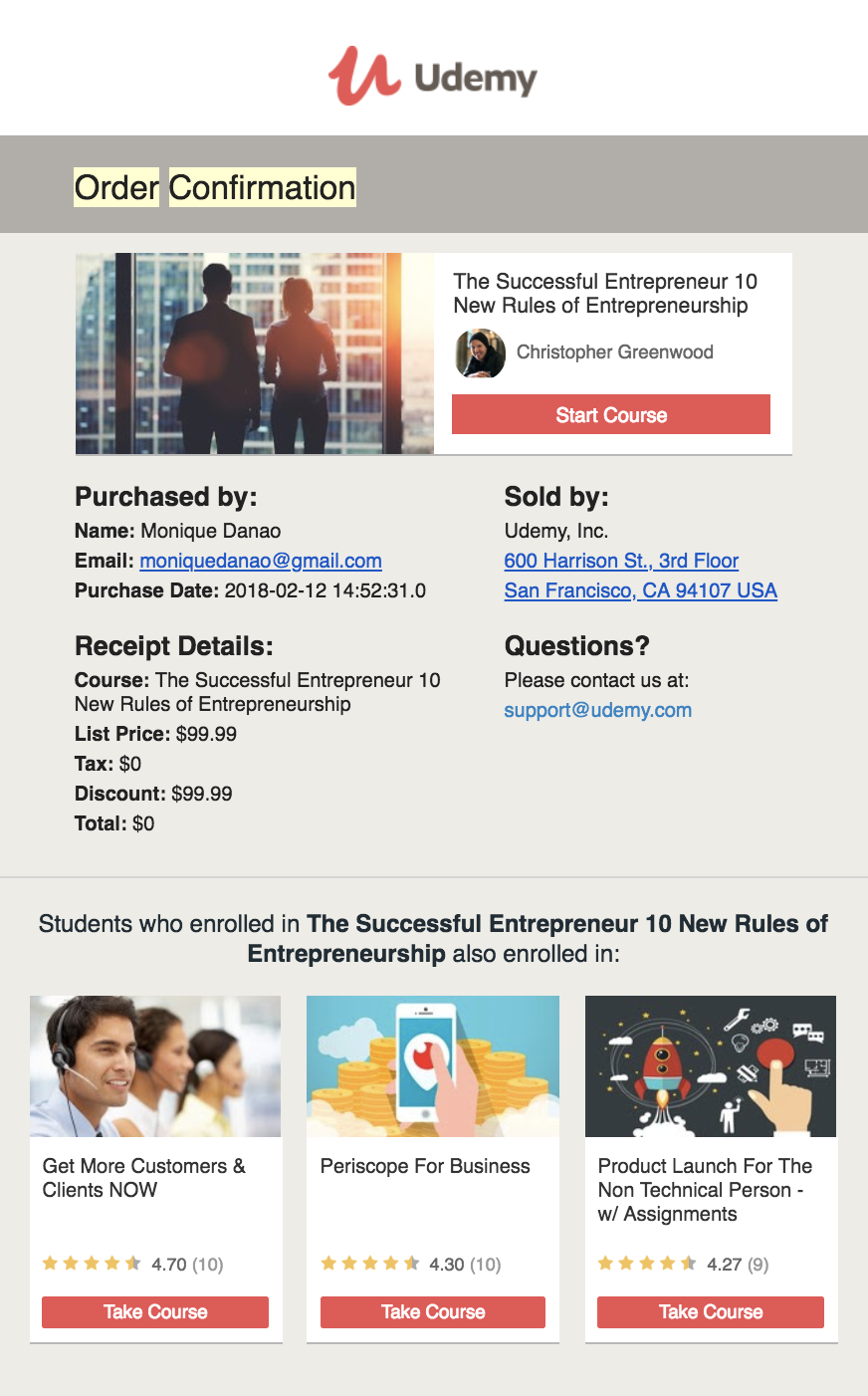
Promoting your products in your transactional emails make a lot of sense because they have very high open rates. In fact, order confirmation emails alone have an open rate of 70.9% , which is 4x more than the average marketing email.
This is because when customers make a purchase, they want to make sure that everything went smoothly. You can also add product recommendations in your auto follow-up emails and abandoned shopping cart emails like Nordstrom.
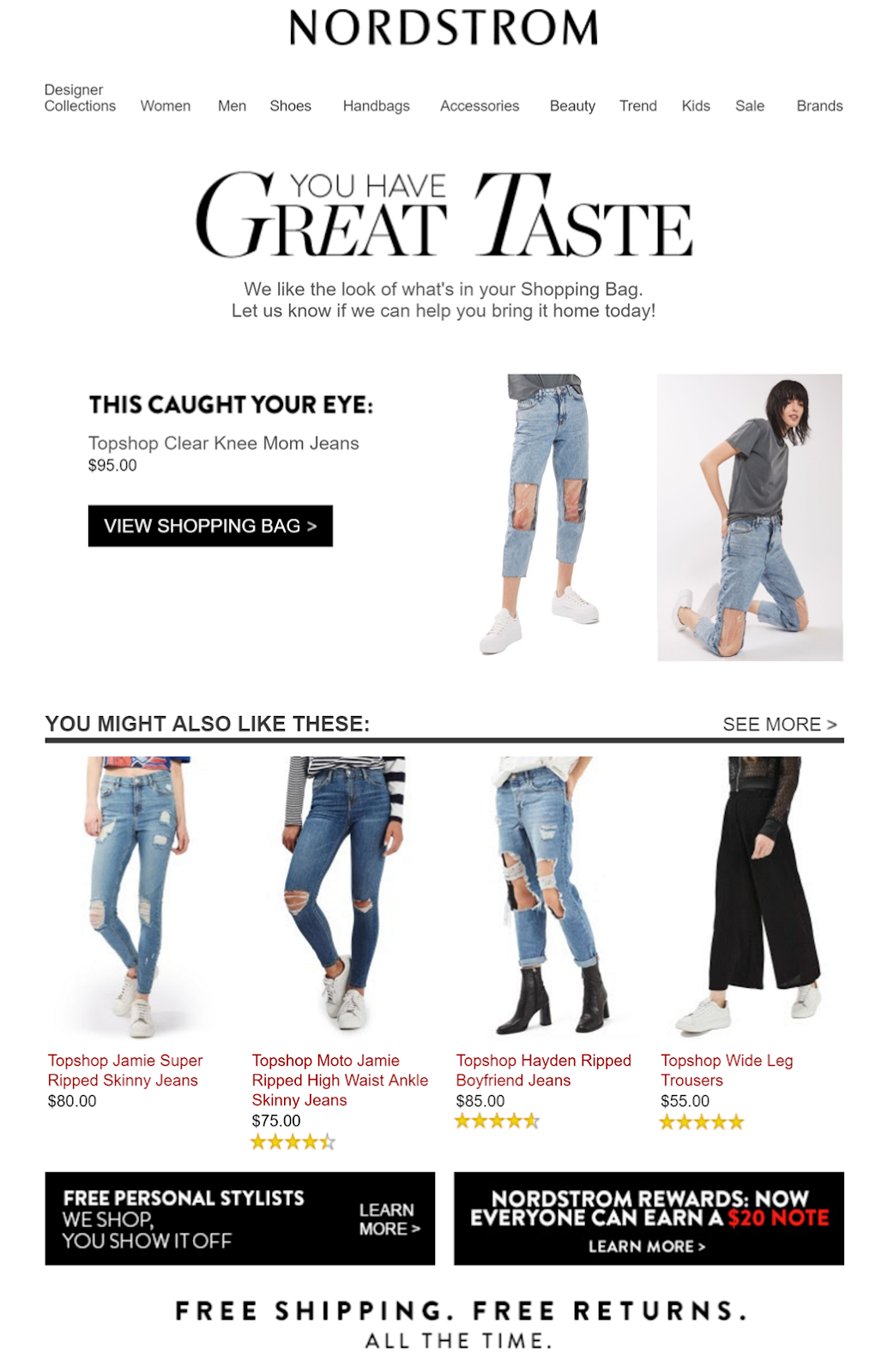
Source: Barilliance
Tip #2: Give Coupons or Discounts for the Next Purchase
Coupons and discounts are a great way for you to incentivize customers to make a repeat purchase. This tactic is effective because customers have the freedom to use the coupon on products of their choice. That said—you should follow Birchbox’s example and try it out: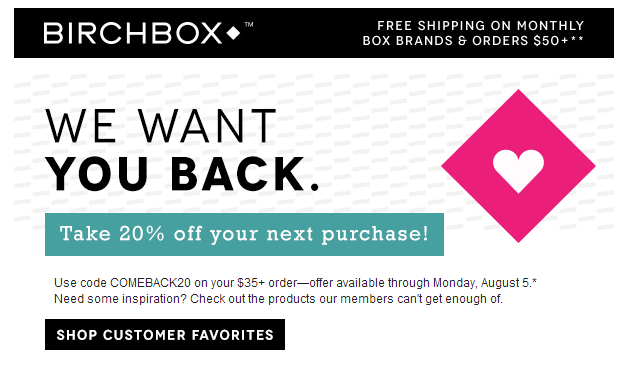
Again, you can add these to your transactional emails and follow-up emails. For example, Althea sends a follow-up email a few days after the customer receives their product. They ask for a review, and in exchange they give customers a 10% discount.
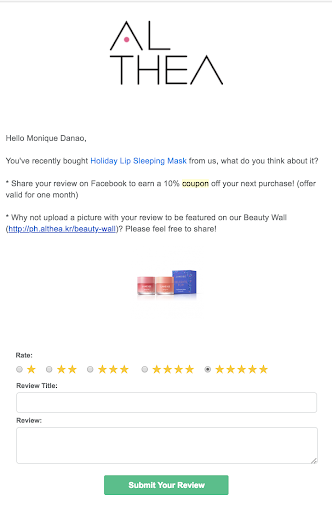
We all know the importance of product reviews in your Shopify store with respect to cultivating social proof. So, this is one way you can encourage customers to make reviewing a habit. Kate Spade uses the same strategy in their cart abandonment emails.
They remind customers about their abandoned items and encourage them to buy by giving them a discount for their next purchase.
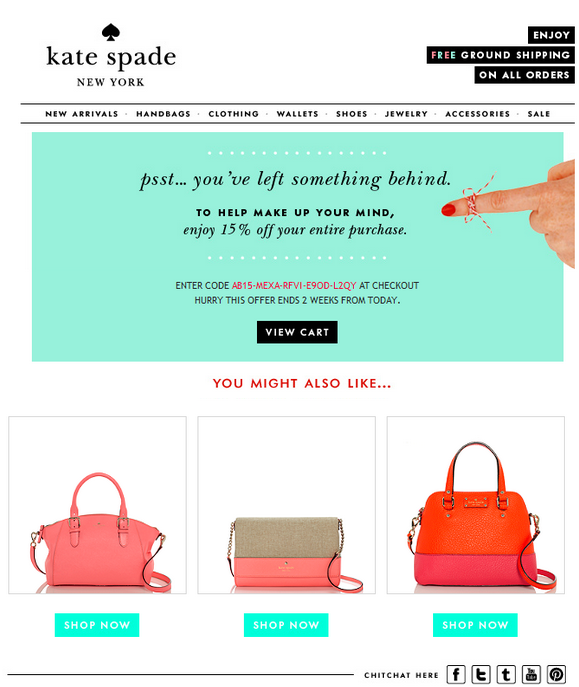
Tip #3: Leverage Referral Codes
When you’re searching for a new restaurant to visit, how often do you ask the opinion of your friends and family?
How often do you ask them for product recommendations? Where to shop?
Every few days?
Every week?
Of course, we rely on our friends’ and family’s opinions. We believe what they have to say, because we trust them. If they say a product is great, then it’s great. And that’s the appeal of integrating referrals in your transactional emails.
There’s a growing body of research that proves that referral marketing is effective. In fact, ReferralCandy found that people pay 2x more attention to recommendations from friends. In addition, 92% of consumers trust recommendations from people they know. That said—you can facilitate the referral process and ensure that customers will talk about your brand if they love it. You can do this by placing a referral codes in your transactional emails.
For starters, a referral code is a unique number assigned to your account. You can use this code and send it to your friends and family. When you make a successful referral, you get cash or rewards, which will depend on the brand’s referral program. A good way you can advertise your referral program is to place them at the bottom of your transactional emails like Althea.
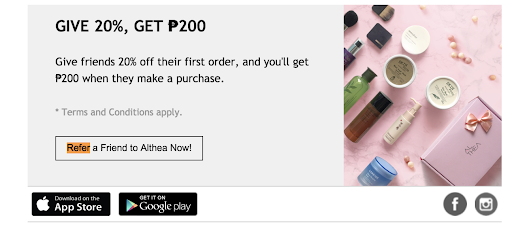
You can also follow Airbnb’s example. After a customer has successfully booked their stay, they are given a referral code, which they can share with friends and family. And when the referral is successful, their friends get $25 off, and they get $25 in return!
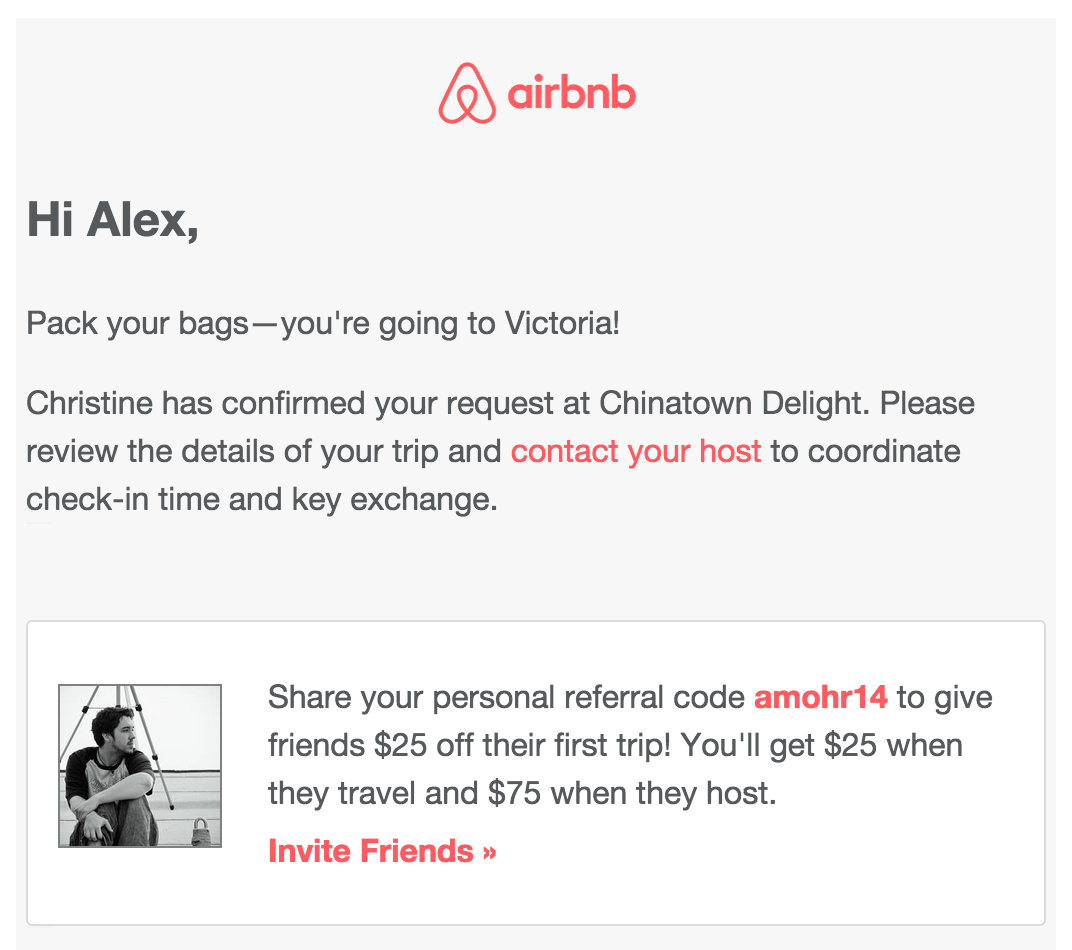
How will You Maximize Customer Lifetime Value in Your Online Store?
Customers are wired to open transactional emails and auto follow-up emails. That’s why you should never miss out on the opportunity to maximize customer lifetime value by sending emails with product recommendations, referral codes and coupons.
But how can you create and customize these types of emails on your online store? Spently understands that coding with html and creating great emails from scratch, can be a long process. So they’ve created an email template builder, which allows you to build emails with smart product recommendations, referral codes and discounts.
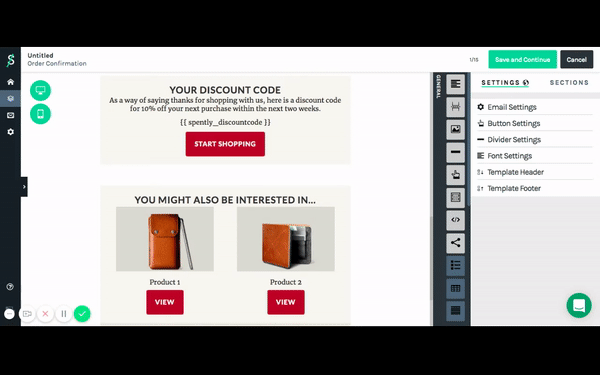
You can start with a 14-day free trial, or subscribe to their starter plan to see how their tool can upgrade your emails and increase your customer lifetime value.









